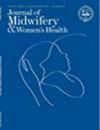Economic, Psychological, and Emotional Well-Being of Pregnant Women During the COVID-19 Pandemic
Abstract
Introduction
The intersection between perinatal mental health and the coronavirus disease 2019 (COVID-19) pandemic remains of significant public health importance. The current study examined the emotional and financial well-being and predictors of elevated depressive symptoms among pregnant women during the COVID-19 pandemic.
Methods
This online survey was conducted with 2118 women ≥18 years old who were pregnant at the time of the survey and living in the United States or Puerto Rico. Depressive symptoms were assessed with the Center for Epidemiologic Studies Depression Scale, with scores ≥10 indicative of elevated depressive symptoms. The final logistic regression model included housing insecurity, financial distress, COVID-19 diagnosis, exposure to COVID-19, and demographic covariates.
Results
More than half the sample (53.8%) had elevated depressive symptoms. In logistic regression analyses, the odds of having elevated depressive symptoms were significantly higher for participants reporting housing insecurity (adjusted odds ratio [aOR], 1.56; 95% CI, 1.22-2.01), financial distress (aOR, 1.57; 95% CI, 1.17-2.12), COVID-19 diagnosis (aOR, 2.53; 95% CI, 1.53-4.17), and COVID-19 exposure (aOR, 1.41; 95% CI, 1.07-1.86), after adjusting for covariates. The association of elevated depressive symptoms with housing insecurity was especially strong among those who experienced COVID-19 (aOR, 6.04; 95% CI, 2.15-17.0).
Discussion
Our findings are consistent with previous literature revealing that diagnosis, exposure, concerns about family, and effects on financial stability were related to depressive symptoms during the pandemic. The relationships between financial and housing concerns with elevated depressive symptoms, independent of concerns about infection in family members, suggest that there may be direct and indirect effects of the pandemic on mental health.

 求助内容:
求助内容: 应助结果提醒方式:
应助结果提醒方式:


